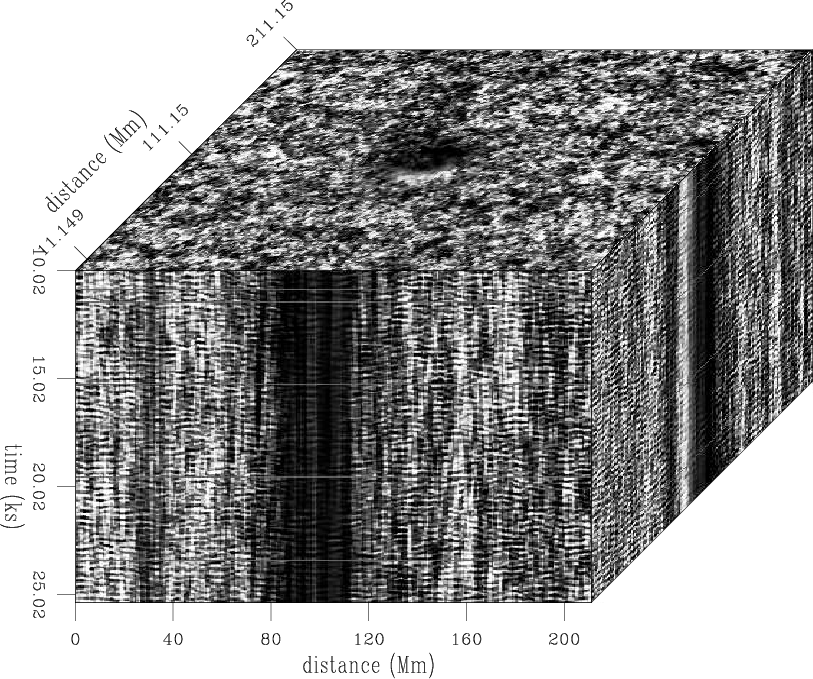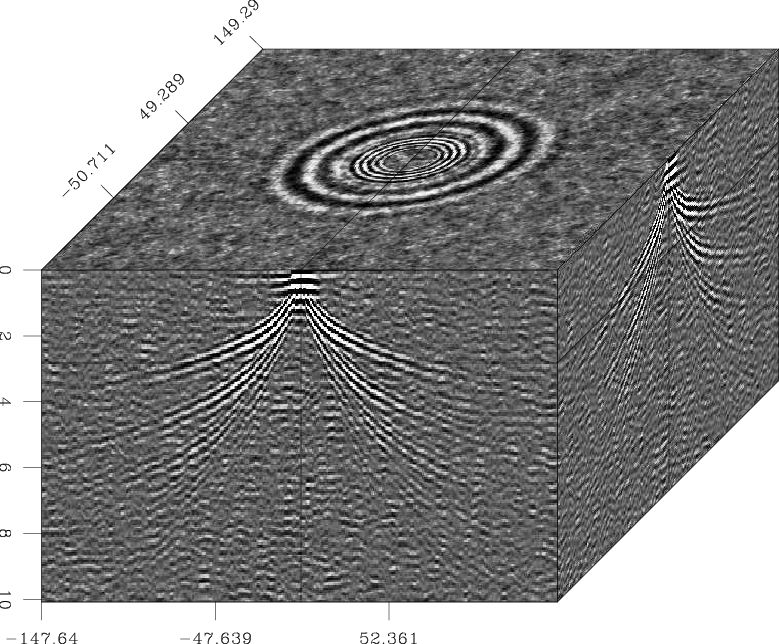|
|
|
|
Short note: Three dimensional deconvolution of helioseismic data |
The method used to acquire the solar response is described in detail in Rickett and Claerbout (2001). The premise is that Kolmogorov spectral factorisation is used since this is an efficient method of constructing a minimum phase time domain function from a given power spectrum (Kolmogorov, 1939). The theory is 1D, however as shown in Claerbout (2001) by applying helical boundary conditions it is possible to model the dataset as a long 1D trace by applying a sequence of lags, and then the factorisation can be applied and the 3D data reconstructed. The raw data and the factorised impulse response can be seen in Figure 1 and Figure 2 respectively.

|
|---|
|
shortcube
Figure 1. The raw helioseismic data, with a sun spot in the centre. |
|
|

|
|---|
|
kolcube
Figure 2. The solar impulse response. |
|
|
|
|
|
|
Short note: Three dimensional deconvolution of helioseismic data |